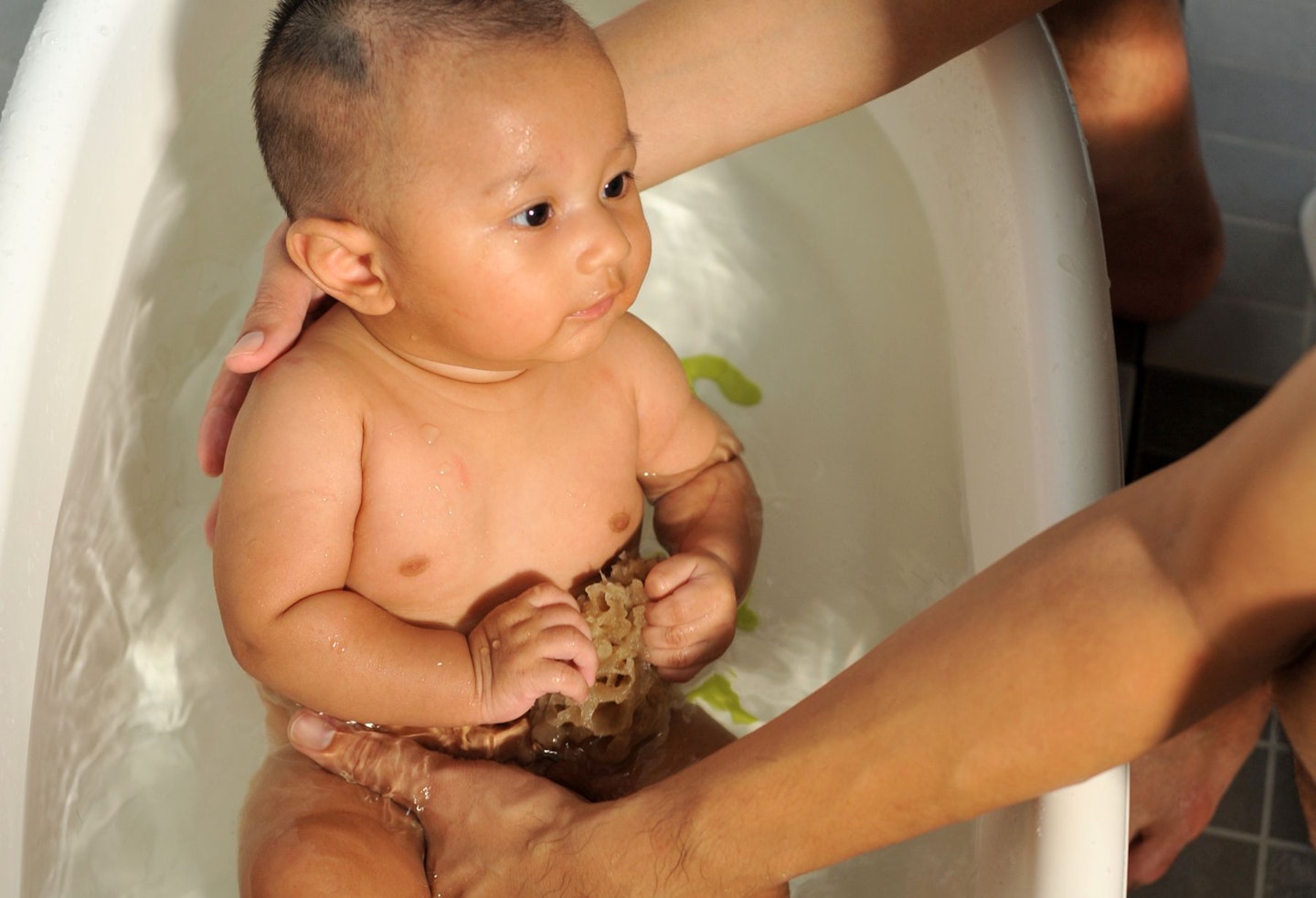
Medically Reviewed by: Charlotte Hoskin
Worried about your baby boy’s red, swollen, or sore penis? It could be balanitis—a common but treatable condition often seen in young boys. While it can cause discomfort, the good news is that, with the right care, it’s usually straightforward to manage.
To help you better understand balanitis in babies, including its causes, symptoms, treatment, and prevention, we spoke to Charlotte Hoskin, consultant midwife at My Expert Midwife and a registered nurse. Here's everything you need to know to care for your little one.
What is balanitis in babies?
Balanitis is an inflammation of the head of the penis, often affecting the foreskin as well. It’s more common in babies and young boys, especially those who are uncircumcised, and typically results from infections or irritation.
According to the London Children's Surgery, approximately 5% of the population of boys of less than 5 years of age will experience balanitis at some point. This makes it a relatively common condition, so there’s no need to panic if your little one is affected.
What does balanitis look like on a baby?
Balanitis in babies usually presents as redness and swelling at the tip of the penis, sometimes accompanied by a whitish discharge or a tight, inflamed foreskin. If you’re unsure whether your baby’s symptoms are balanitis, it’s always best to consult a healthcare professional.

What causes balanitis in babies?
Balanitis can be caused by a variety of factors, with the most common being:
-
Nappy rash: Prolonged exposure to dampness or irritation from urine in nappies can lead to inflammation.
-
Poor Hygiene: Inadequate cleaning under the foreskin in uncircumcised babies can result in bacterial or fungal infections.
-
Thrush (Yeast Infection): A fungal infection often caused by damp environments.
-
Irritants: Certain soaps, wipes, or diapers may irritate your baby’s sensitive skin.
-
Skin conditions, such as eczema or psoriasis
Symptoms of balanitis in babies
Recognising the symptoms early can help in treating balanitis effectively. Common symptoms of balanitis in babies include:
-
Redness or whitish spots and swelling at the tip of the penis
-
Pain or discomfort, especially during urination
-
A tight foreskin that may appear inflamed
-
Possible discharge or an unpleasant smell
-
Fussiness or crying when passing urine
If your baby shows any of these signs, it’s important to take action quickly to avoid further discomfort.
How to treat balanitis in babies at home
According to Charlotte the most straightforward way to treat balanitis is "to improve the hygiene of the penis." She shares three tips you can do at home.
-
Gentle cleaning: "Gentle cleaning: “Bathe your baby in warm water only, there is no need to use soap as even non-perfumed varieties can irritate. Avoid pulling back the foreskin forcefully.”
-
Frequent nappy changes: "You should clean and dry the penis and foreskin during every nappy change but avoid using baby wipes to do this as they can irritate the foreskin, change wet or soiled nappies ASAP."
-
Nappy-free time: "Try leaving your child without a nappy for short periods. Fresh air will help to prevent nappy rash and will help nappy rash get better."
Charlotte adds, "Most cases of balanitis in babies are mild and usually go away within a few days. However, it can be persistent or recurrent, if it does not settle after a few days seek medical attention."
Can you use nappy cream for balanitis?
While nappy creams can soothe irritation caused by nappy rash, they are not a cure for balanitis caused by infections. If you suspect balanitis, focus on keeping the area clean and dry and consult a doctor if symptoms don’t improve.
How long does balanitis last in babies?
With proper treatment, balanitis usually clears up within a week. However, untreated or recurrent cases may lead to complications such as phimosis (a condition where the foreskin becomes too tight) or infections that require more intensive medical care.
Balanitis in circumcised vs. uncircumcised babies
Balanitis is more common in uncircumcised babies, as bacteria and irritants can become trapped under the foreskin. Circumcised babies are less likely to develop balanitis, but irritation from diapers or hygiene products can still cause redness and swelling.

How to prevent balanitis in babies
Prevention is key when it comes to balanitis. Here Charlotte shares some tips to reduce the risk:
-
Maintain hygiene: “Clean your baby’s genital area gently during baths, soap as even non-perfumed varieties can irritate.”
-
Regular nappy changes: “Change your baby's nappy frequently to prevent the build-up of moisture, urine, and stool, which can lead to irritation and infection.”
-
Avoid tight-fitting nappies: “Make sure your baby wears nappies that are snug but not too tight. Tight nappies can cause chafing and trap moisture.”
-
Check for any redness or swelling: “Regularly check your baby’s genital area for any signs of irritation or redness, and take action if you notice any discomfort or unusual symptoms.”
-
Teaching proper hygiene to potty-trained boys: "It is essential to encourage good habits, and teach them to shake off excess urine after using the potty to avoid accidents or wet clothes."
When to see a doctor
If your baby’s symptoms persist or worsen despite home treatment, consult your GP. Signs that may require medical attention include:
-
Persistent redness, swelling, or pain
-
Discharge from the penis
-
Difficulty urinating
Your doctor may prescribe an antibiotic cream or antifungal treatment to address the infection. In severe or recurring cases, circumcision might be recommended as a long-term solution. Treatments may include: Topical or oral antifungal medication, Topical hydrocortisone cream or ointment, Oral antibiotics, and Antihistamines.
Balanitis in babies may be uncomfortable, but with the right care and attention, it can be treated quickly and effectively. If your baby experiences recurring balanitis, don’t hesitate to discuss long-term prevention strategies with your GP.
About the expert
Charlotte Hoskin has also provided her expert advice and medically reviewed this article. Charlotte is a mum of two and a registered midwife who has worked in hospitals, as well as in a GP surgery as an Advanced Nurse Practitioner and independent prescriber, specialising in gynaecology, women’s and children’s health and giving care to pregnant women with complex needs such as epilepsy and diabetes.
About the author
Anne Lora Scagliusi is a Senior Digital Writer at Mother & Baby. She is a Scotland-based journalist with over a decade of international writing experience, specialising in women’s health, maternal mental health, and wellness. Her work has been featured in Vanity Fair, Marie Claire, and Glamour and has appeared on several Vogue global editions. She is mum to a one-year-old bambino and lives between Italy and the UK.
